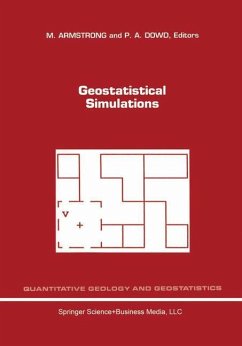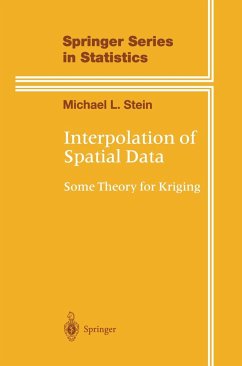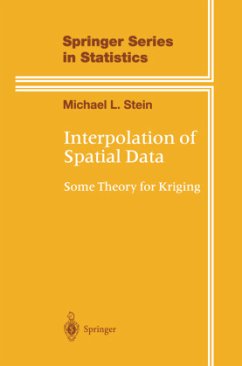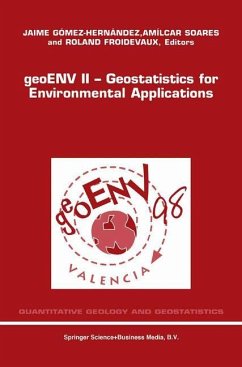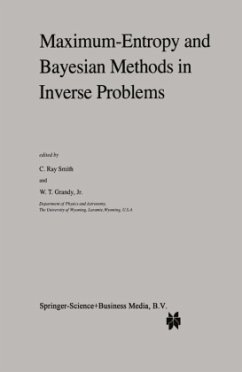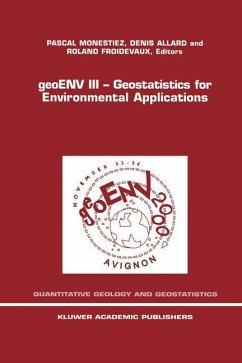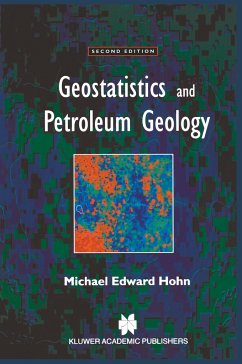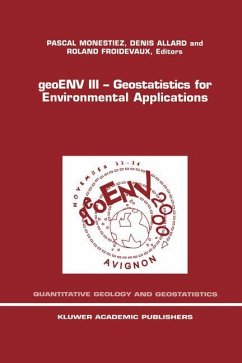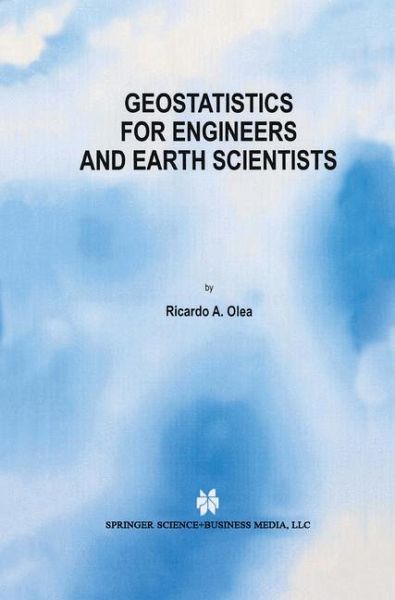
Geostatistics for Engineers and Earth Scientists
Versandkostenfrei!
Versandfertig in 1-2 Wochen
115,99 €
inkl. MwSt.
Weitere Ausgaben:

PAYBACK Punkte
58 °P sammeln!
Engineers and earth scientists are increasingly interested in quantitative methods for the analysis, interpretation, and modeling of data that imperfectly describe natural processes or attributes measured at geographical locations. Inference from imperfect knowledge is the realm of classical statistics. In the case of many natural phenomena, auto- and cross- correlation preclude the use of classical statistics. The appropriate choice in such circumstances is geostatistics, a collection of numerical techniques for the characterization of spatial attributes similar to the treatment in time serie...
Engineers and earth scientists are increasingly interested in quantitative methods for the analysis, interpretation, and modeling of data that imperfectly describe natural processes or attributes measured at geographical locations. Inference from imperfect knowledge is the realm of classical statistics. In the case of many natural phenomena, auto- and cross- correlation preclude the use of classical statistics. The appropriate choice in such circumstances is geostatistics, a collection of numerical techniques for the characterization of spatial attributes similar to the treatment in time series analysis of auto-correlated temporal data. As in time series analysis, most geostatistical techniques employ random variables to model the uncertainty that goes with the assessments. The applicability of the methods is not limited by the physical nature of the attributes.
Geostatistics for Engineers and Earth Scientists presents a concise introduction to geostatistics with an emphasis on detailed explanations of methods that are parsimonious, nonredundant, and through the test of time have proved to work satisfactorily for a variety of attributes and sampling schemes. Most of these methods are various forms of kriging and stochastic simulation. The presentation follows a modular approach making each chapter as self-contained as possible, thereby allowing for reading of individual chapters, reducing excessive cross-referencing to previous results and offering possibilities for reviewing similar derivations under slightly different circumstances. Guidelines and rules are offered wherever possible to help choose from among alternative methods and to select parameters, thus relieving the user from making subjective calls based on an experience that has yet to be acquired.
Geostatistics for Engineers and Earth Scientists is intended to assist in the formal teaching of geostatistics or as a self tutorial for anybody who ismotivatedto employ geostatistics for sampling design, data analysis, or natural resource characterization. Real data sets are used to illustrate the application of the methodology.
Geostatistics for Engineers and Earth Scientists presents a concise introduction to geostatistics with an emphasis on detailed explanations of methods that are parsimonious, nonredundant, and through the test of time have proved to work satisfactorily for a variety of attributes and sampling schemes. Most of these methods are various forms of kriging and stochastic simulation. The presentation follows a modular approach making each chapter as self-contained as possible, thereby allowing for reading of individual chapters, reducing excessive cross-referencing to previous results and offering possibilities for reviewing similar derivations under slightly different circumstances. Guidelines and rules are offered wherever possible to help choose from among alternative methods and to select parameters, thus relieving the user from making subjective calls based on an experience that has yet to be acquired.
Geostatistics for Engineers and Earth Scientists is intended to assist in the formal teaching of geostatistics or as a self tutorial for anybody who ismotivatedto employ geostatistics for sampling design, data analysis, or natural resource characterization. Real data sets are used to illustrate the application of the methodology.





